UP board I2S connection to Audiophonics DAC
Carlos
New Member Posts: 3 ✭
I would love to try the Audiophonics i-Sabre V3 DAC board connected via the 40 pin header to this new 'UP board'. The DAC board was originally created for the Rasberry Pi2, I hope that it can be used with the more powerful UP board.
http://www.audiophonics.fr/fr/dac-diy/audiophonics-i-sabre-dac-es9023-v3-tcxo-raspberry-pi-20-a-b-i2s-p-10657.html
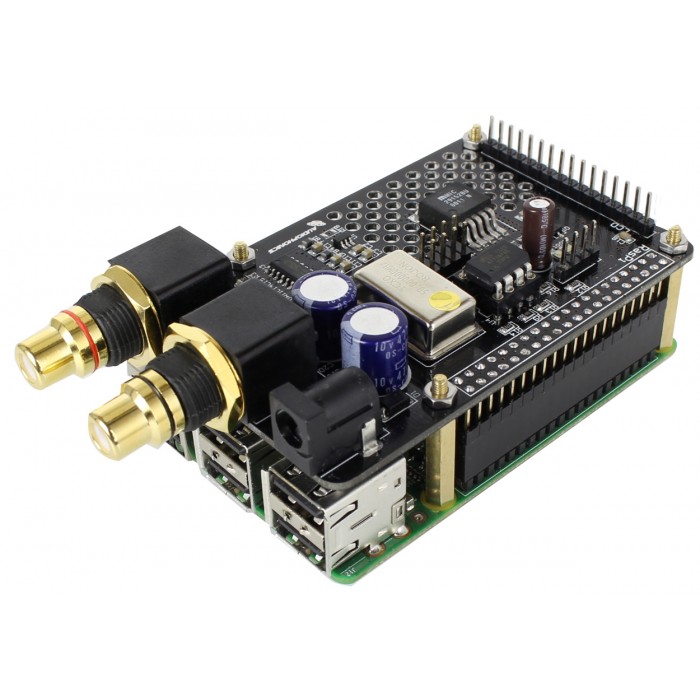
There also seems to be a Python library for the UP board used on Raspberry Pi platforms to control GPIO pins.
https://up-community.org/UpWiki/index.php/RPi.GPIO
In addition to GPIO control, it is also used by many other libraries to query the Raspberry Pi hardware version as header pin layouts differed between certain versions.
As the UP board has a similar header pin layout to the Raspberry Pi 2, we have created a port of the RPi.GPIO library for UP. This allows many existing Python scripts developed for Raspberry Pi to be used on UP also.
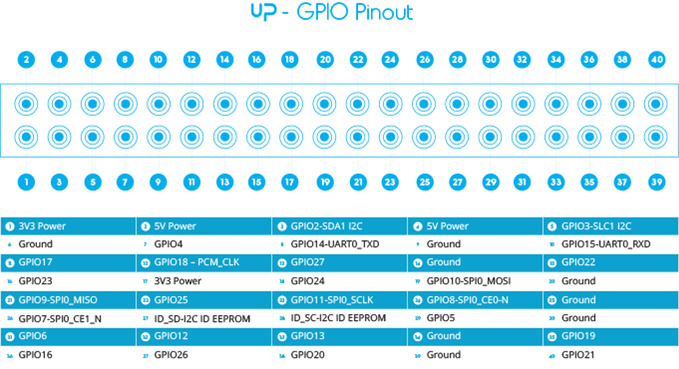
As the UP board has x86 CPU it should be able to be used with Roon Labs Server software, and then connect it straight to my amplifier & speakers (Not having a computer directly connected to my DAC via USB would be a good idea, I2S connection seems better). Roon Server needs to be run on an x86 processor, that is why it couldn't work on the Rasberry Pi2, BUT should work on the UP board.
https://roonlabs.com/downloads.html
There is also a display and soft shutdown button with the Audiophonics DAC kit, and some Python code to link it all together.
The Up board appears to have the same form factor as the Rasberry Pi & the same 40 pin connector & pin definition GPIO header, and now with RPi.GPIO library for UP, maybe we might be closer to IS2 connected DAC with a reasonably fast CPU, RAM, storage etc... (that might also be good for connection via HDMI for XMBC/video playback too).
Is anyone able to comment as to whether this all seems feasible?
THANKS
http://www.audiophonics.fr/fr/dac-diy/audiophonics-i-sabre-dac-es9023-v3-tcxo-raspberry-pi-20-a-b-i2s-p-10657.html

There also seems to be a Python library for the UP board used on Raspberry Pi platforms to control GPIO pins.
https://up-community.org/UpWiki/index.php/RPi.GPIO
In addition to GPIO control, it is also used by many other libraries to query the Raspberry Pi hardware version as header pin layouts differed between certain versions.
As the UP board has a similar header pin layout to the Raspberry Pi 2, we have created a port of the RPi.GPIO library for UP. This allows many existing Python scripts developed for Raspberry Pi to be used on UP also.

As the UP board has x86 CPU it should be able to be used with Roon Labs Server software, and then connect it straight to my amplifier & speakers (Not having a computer directly connected to my DAC via USB would be a good idea, I2S connection seems better). Roon Server needs to be run on an x86 processor, that is why it couldn't work on the Rasberry Pi2, BUT should work on the UP board.
https://roonlabs.com/downloads.html
There is also a display and soft shutdown button with the Audiophonics DAC kit, and some Python code to link it all together.
The Up board appears to have the same form factor as the Rasberry Pi & the same 40 pin connector & pin definition GPIO header, and now with RPi.GPIO library for UP, maybe we might be closer to IS2 connected DAC with a reasonably fast CPU, RAM, storage etc... (that might also be good for connection via HDMI for XMBC/video playback too).
Is anyone able to comment as to whether this all seems feasible?
THANKS
Comments
-
yes I'm interested to see if this will work as well,
im wondering which DACS will work with the up board, i cannot buy one until i figure out which ones work with the up board,
the ARM has so much working of course, but i hope the up board will figure this out or else I'm going to have to go ARM instated of Intel which sucks, -
Looks like there is a new DAC on the horizon, the spec look very good:
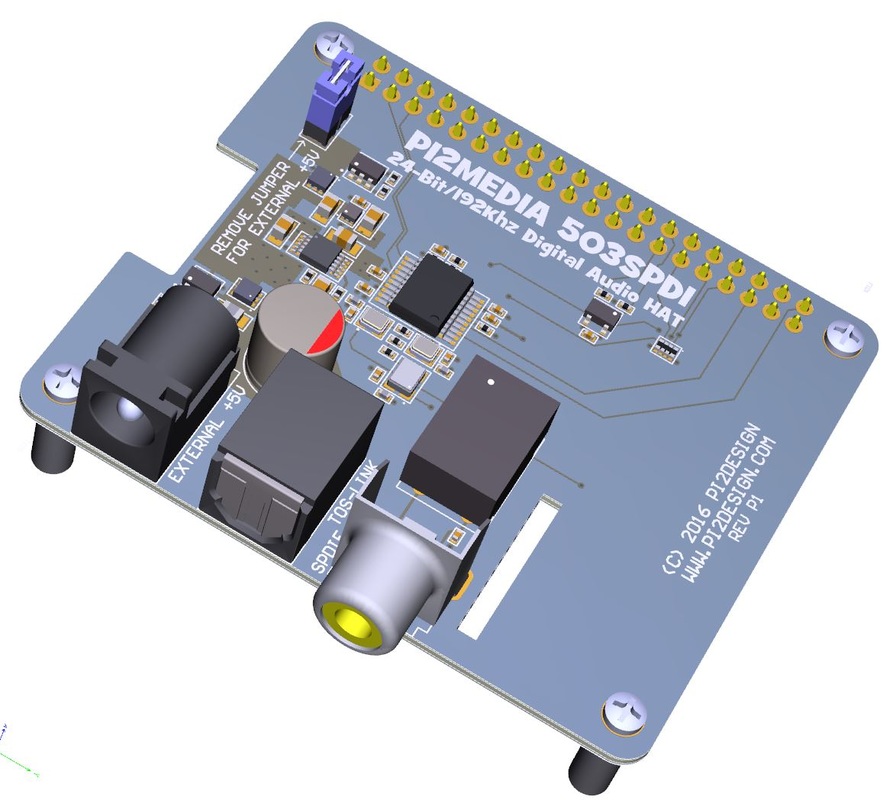
1) WM8804 with GPIO selectable 24.5476Mhz/22.5792Mhz Clock input
2) Clock are very low noise using NDK2520SD series. Not as low as Crytek's best, but not $20 each either!
3) WM8804 runs in Master Mode, Pi in Slave mode so BCLK and LRCLK are very low jitter
4) Transformer coupled Coax and Optical SPDIF output
5) LT3042 Ultra-Low Noise, High PSRR LDO for SPDIF PLL and Crystal supply
6) Jumper to isolate PI 5V from Hat 5V with 2.5mm barrel jack for external 5V input
7) 4-Layer PCB with filtered ground from Pi
Here is a thread all about it > http://www.superbestaudiofriends.org/index.php?threads/raspberry-pi-i2s-to-spdif-hat.1990/
This DAC board has REALLY caught my attention. I am dreaming of getting Roon Server running using this Pi2Media 503SPD1 DAC Hat & the UP board -
looks good ,but I'm looking for rica connectors, preferably gold plated, as i want to hook it up to my studio monitors/speakers
-
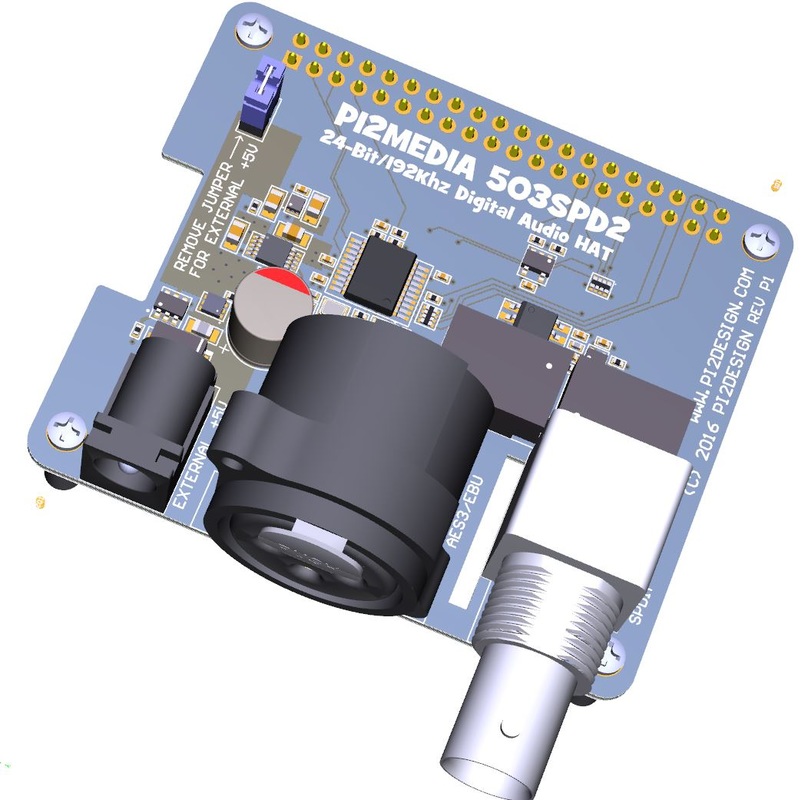
&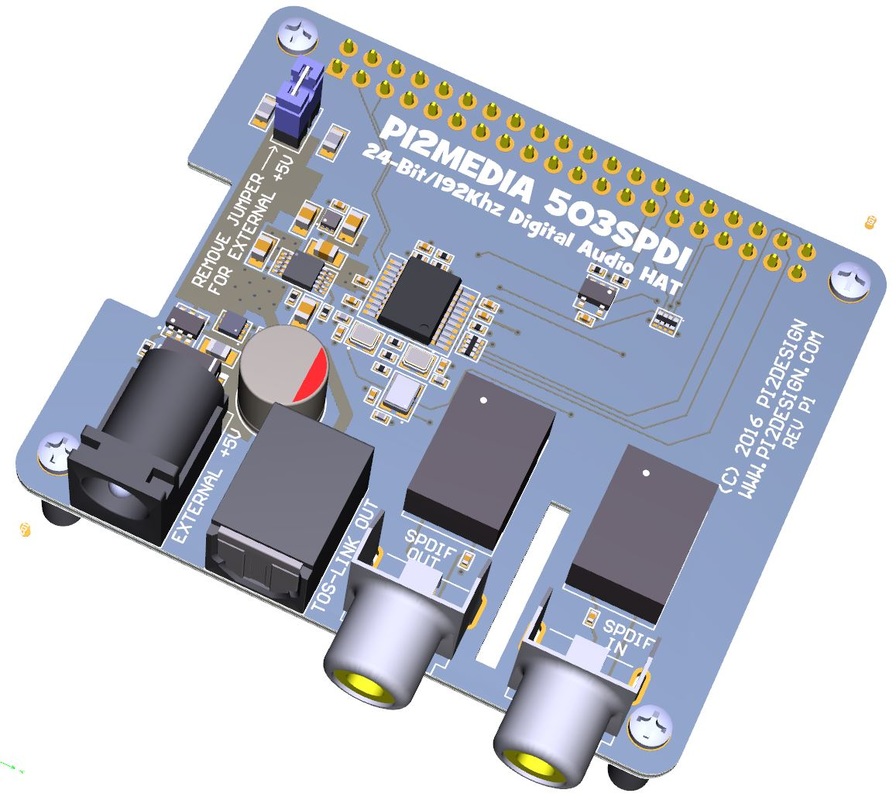
RCA connection have been mentioned inn the thread. -
I want to make Bit-Perfect Audiophile Music Player and have some questions..
Could you please clarify what audio codecs are supported by Up board?
Is be used integer or fractional clock dividers?
How good is quality of upsampling and downsampling of this CPU?
Would be able to support 44.1 KHz sampling frequency without any resampling?
What DAC is the best to use with this board? -
That is, if this is how it really works. I attend to use DAC AK 4495seq.Poon wrote:I would love to try the Audiophonics i-Sabre V3 DAC board connected via the 40 pin header to this new 'UP board'. The DAC board was originally created for the Rasberry Pi2, I hope that it can be used with the more powerful UP board.
http://www.audiophonics.fr/fr/dac-diy/audiophonics-i-sabre-dac-es9023-v3-tcxo-raspberry-pi-20-a-b-i2s-p-10657.html
There also seems to be a Python library for the UP board used on Raspberry Pi platforms to control GPIO pins.
https://up-community.org/UpWiki/index.php/RPi.GPIO
In addition to GPIO control, it is also used by many other libraries to query the Raspberry Pi hardware version as header pin layouts differed between certain versions.
As the UP board has a similar header pin layout to the Raspberry Pi 2, we have created a port of the RPi.GPIO library for UP. This allows many existing Python scripts developed for Raspberry Pi to be used on UP also.
As the UP board has x86 CPU it should be able to be used with Roon Labs Server software, and then connect it straight to my amplifier & speakers (Not having a computer directly connected to my DAC via USB would be a good idea, I2S connection seems better). Roon Server needs to be run on an x86 processor, that is why it couldn't work on the Rasberry Pi2, BUT should work on the UP board.
https://roonlabs.com/downloads.html
There is also a display and soft shutdown button with the Audiophonics DAC kit, and some Python code to link it all together.
The Up board appears to have the same form factor as the Rasberry Pi & the same 40 pin connector & pin definition GPIO header, and now with RPi.GPIO library for UP, maybe we might be closer to IS2 connected DAC with a reasonably fast CPU, RAM, storage etc... (that might also be good for connection via HDMI for XMBC/video playback too).
Is anyone able to comment as to whether this all seems feasible?
THANKS
-
If anyone has this board, you can send it to me in the US and I will certify it on the UP boards (UP and UP Squared).
I am currently certifying a number of other HATs as well.
Send me a private message.
I will also try to reach out to the company to see if they would loan one as well.Eric Duncan - UP Evangelist - My thoughts are of my own free will
Answered? Please remember to mark the posted answered to highlight it for future visitors!
-
Has any further work happened on the I2S Bus audio from the Intel X5 SoC for Windows 10 OS? I see there was supposed to be a new BIOS 4.0 update for I2S Bus, but said it would only work with Ubuntu Linux. With Microsoft Visual Studio 2019 you can compile the demo SYSVAD audio driver for X64 OS and it runs for testing. Very little information other than it is I2S Bus#1 open for use. It can be used in a streaming capability as the DAC's can be set manually for operation without the I2C Bus interface. Any further information available?
